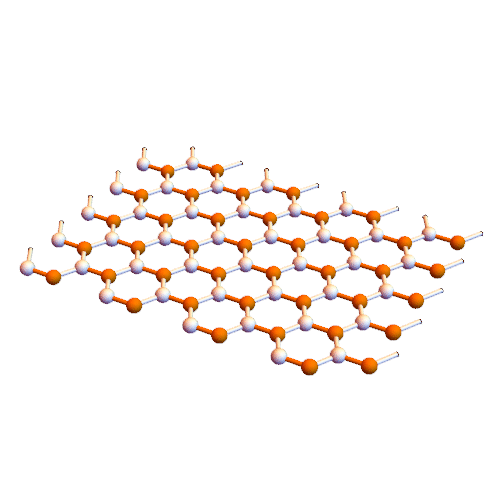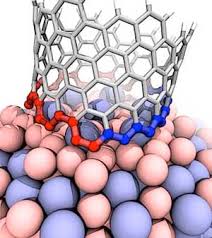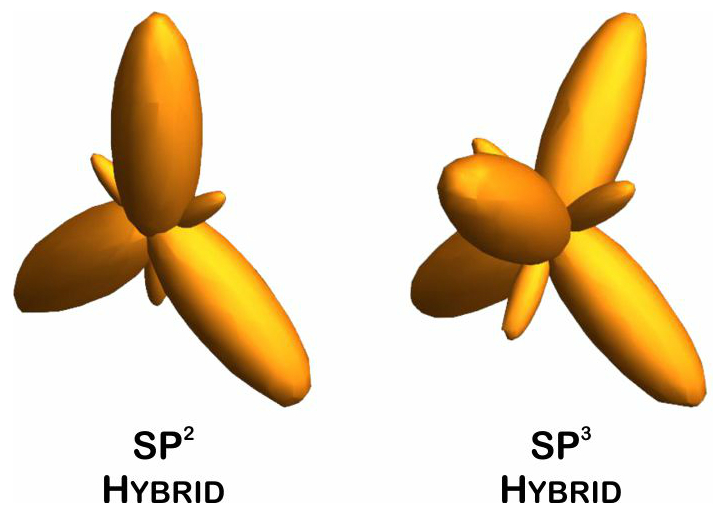Investigation of Aromatic Molecules of Nanotubes (SWCNTs and SWCNTs) PhD in Nano-Microelectronics
Researcher and author: Dr. ( Afshin Rashid)
نکته : مشخص است که نانولوله های کربنی برهمکنش قوی با مولکولهای آروماتیک مانند سطح گرافیت دارند. میتوان SWCNTs را به صورت سیستم π الکترون بسط یافته در نظر گرفت که میتواند با دیگر سیستم های πالکترون از طریق برهمکنش های π-π ارتباط برقرار کند.
Such π-π interactions act as the main driving force for the adsorption of DNA and aromatic polymers on the surface of the nanotube . It is interesting and important to discover how selective interactions between π-conjugate compounds and SWCNTs . Certain aromatic monomers and polymers can selectively dissolve semiconductor or metal SWCNTs . The π-π adhesion between the aromatic molecule and the surface of the SWCNTs is done in a selective direction, which can be one of the reasons for the selective function of these aromatic molecules. Selective non-covalent functionalization of semiconductor SWCNTs is characterized by porphyrin chemistry. Some aromatic molecules can be complexed Load transfer with metal SWCNTs. Fluorene polymer derivatives can selectively affect both the nanotubes of the polymer structure and the solvent structure, respectively, and in some cases lead to very high selectivity in terms of diameter and chiral angle . They used Diles-Alder compression molecules (acenes) to disperse large-diameter nanotubes. In the case of selectivity of aromatic molecules, nanotubes with a small diameter (<2.1 nm) were concentrated, while in the selection of aromatic molecules in the structure of nanotubes with a larger diameter (6.1% nm).
Larger diameter semiconductor carbon nanotubes have better efficiencies in electronic equipment. Selective dispersion of SWCNTs using aromatics Dense benzoids such as pentacene, anthracene and quaterylene have been propagated. Large chiral nanotubes can be separated using dense benzoid aromatics, while small chiral nanotubes are separated with polypropylene derivatives. In addition, by controlling the dispersion-separation process, metal nanotubes and then semiconductor nanotubes can be separated. Optical isomers separated nanotubes using diporphyrin aromatic molecules. Chiral diporphyrin isomers act as molecular tweezers. Separate selective right or left SWCNTs. Chiral selectivity is optimized by controlling the bidirectional angle between the porphyrins. Interestingly, diporphyrin molecules can be right-handed or left-handed Prior to this, electron scatter detects SWCNTs and SWCNTs by correcting the carbon lattice error in space. Or they can partially separate the SWCNT and SWCNTs enantiomers. This allows aromatic nanomolecules to separate chiral nanotubes with higher reliability.
Conclusion :
The advantage of using aromatic molecules is their structural diversity and their similarity to nanotubes. Molecules can be designed and synthesized to increase the accuracy of the separation operation and to make the separation non-original . There are generally two types of covalents: the first is that different adsorption is done by molecules and the second is the intensified scattering of SWCNTS adsorption . Therefore, in these non-covalent methods, the separation efficiency is always affected by the solvents .
Researcher and author: Dr. ( Afshin Rashid)
PhD in Nano-Microelectronics




